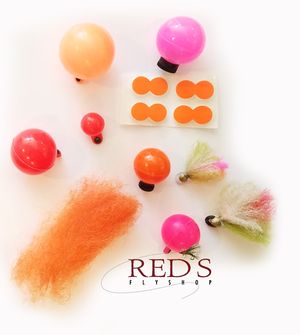Fly fishers match strike indicator size with river conditions
FISHING -- Strike indicators are especially important to fall fly fishing as surface activity tapers off on the region's trout stream.
The guides at Red's Fly Shop on the Yakima River have prepared the following information pointing out that selecting the right indicator can be as important as selecting the right nymph pattern.
We see anglers scrutinize over their flies, depth, and knots only to rig it up under an indicator that offers them ZERO chance at a trout!Understand how the indicator/nymph relationship really works!The indicator and the fly size/weight must have balance and agree with one another! Surface currents are fast. The indicator will almost always float ahead of the nymph towing it along. Especially if the indicator is too buoyant for the nymphs.The fly should direct the drift and be able to slow the indicator down, or even direct it into another seam-line. If the indicator is too big it won't react to the fly's desire to be in another seam.Suspension Nymphing vs. Dredging vs. Surface Nymphing:3 basic types of nymphing:Suspension Nymphing. This is the most common. Its my #1 tactic, your fly should be suspended about 90 degrees under the indicator levitating partway up the water column. This is also the most critical style for your indicator and nymph to work together. Keeping that 90 degree angle is much easier when the fly/indicator agree. Yarn indicators are probably the best for this because they float slower than "bobber" style. Having an indicator that is small enough, and floats slow enough for the nymph to fall underneath without the indicator running away is essential! Indicator should be positioned about 4' on average from the end of your fly line.Dredging. You'll really need to be on foot for this. It doesn't work very well from a drifting boat. "Bobber" style indicators like a Thingamabobber or Airlock Indicators. Your indicator MUST be buoyant enough to pick your flies up off the bottom and drag them off the substrate. Your indictor will typically be close to your fly line here, 2-4' is about right.Surface Nymphing. This is emerger stuff here usually. This is delicate stuff. You'll be doing this within 18" of the surface most of the time. Your indicator here must be very small. Palsa Indicators or a tiny tuft of New Zealand Wool is great. Your indicator will be 7' or more from the end of your fly line here.
Another tip: the greater distance you keep between your fly line and indicator the more drag free and natural you will be able to present your offering. Most drag in generated in the fly line itself. There is a trade off however. The farther from your fly line the indicator gets the more difficult it can become to cast.

